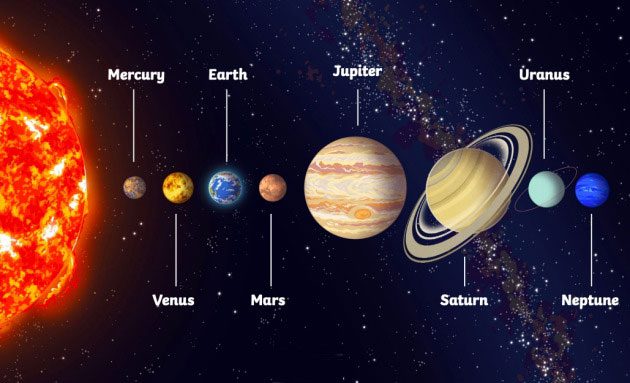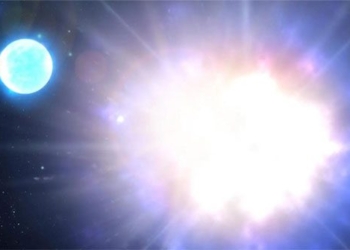One day, the Sun will die. Our brilliant star – the Sun cannot exist forever.
After billions of years shining through nuclear fusion, the elements that fuel the Sun’s synthesis will deplete. As these resources dwindle, the Sun will undergo a tragic transformation before becoming a white dwarf. This process will also have dire consequences for the inner planets of the Solar System, including Earth.
When the fuel is no longer sufficient to counteract gravitational forces, the Sun’s core will collapse while its outer layers expand, turning the Sun into a gigantic red giant with a radius that could reach Mars. Once it expels its outer material, only the core remains, the remnants of a star. At this point, the Sun will be smaller than Earth and will emit only thermal radiation.

Eventually, the Sun will transform into a giant red star. (Illustrative image).
We have predicted this tragic scenario for the Sun in about 5 billion years. But what about the planets then? What about Earth?
Physicist Amornrat Aungwerojwit from Naresuan University in Thailand and a team of scientists have analyzed the long-term changes in brightness of three white dwarf stars and inferred the impact this might have on the planetary systems surrounding these stars.
Fortunately, we can rest assured that humanity will likely no longer be on Earth at that time, or will be living somewhere else in the universe. Our blue planet and other planets will not escape damage. According to analyses from the white dwarf stars, the death of the Sun will cause devastation in the Solar System.
In summary, Mercury and Venus will have vanished, along with all other celestial bodies in the inner Solar System. The ultimate fate of these planets will be torn apart as their distance from the Sun shrinks and they are ultimately engulfed by it.
Earth may or may not survive, depending on how its orbit changes in response to the Sun’s mass loss and the gravitational interactions among the planets. If Earth is fortunate enough to escape the Sun’s grasp, our planet will still be drastically different from the lush and life-sustaining world we know today.
Physicist Boris Gansicke from the University of Warwick in the UK stated: “Whether Earth can move fast enough before the Sun expands, engulfs, and incinerates it remains unclear. But even if it avoids being swallowed by the Sun, Earth’s atmosphere would be stripped away, and the oceans would completely evaporate, making it no longer a beautiful place to live.”
How do we know all of this by observing white dwarf stars? By studying their changes in brightness.
The flickering light of a star holds a wealth of information. If the flickering occurs regularly, the fluctuations in intensity may indicate that something is orbiting the star, blocking a part of its light periodically.
The three stars analyzed by scientists in this latest study exhibited brightness changes that previous research indicated were due to surrounding planetesimal debris clouds.
Aungwerojwit noted: “Previous studies have shown that when asteroids, moons, and planets approach white dwarf stars, the immense gravitational pull of the host star tears these smaller planets apart into smaller fragments.”
By examining 17 years of valuable data on the three white dwarf stars, the researchers were able to paint a picture of how this process might unfold. All three stars exhibited gradually changing brightness, consistent with the hypothesis that they possess large clouds of debris being increasingly ground into finer dust by the host star before disappearing, likely due to dust and rock being drawn into the white dwarf.
One star showed signs of a catastrophic event in 2010, another in 2015. The third star experienced unusual dimming events every few months and chaotic fluctuations on a scale of a few minutes. All three stars are currently functioning completely normally, with no further brightness changes occurring.
This indicates that the process of the host star tearing apart and engulfing planets occurs quite rapidly. However, if Earth faces such a destructive end, it certainly will not be tragic for those witnessing it, as Earth would be a desolate planet by that time.
Gansicke remarked: “The bad news is that Earth may be engulfed by the expanding Sun before it becomes a white dwarf. For the rest of the Solar System, some asteroids located between Mars and Jupiter, and even some of Jupiter’s moons, may be dislodged from their orbits and move close enough to the white dwarf to meet a similar fate as we have studied.”
However, there is no need to worry about humanity at that time, as Earth’s oceans will boil away in about a billion years, long before the Sun enters its death throes.





















































